Claude Monet spent over four decades in the small village of Giverny, and it shows in his work. The winding Seine, blooming gardens, and rural scenes around his home became the heart of his painting life. He didn’t just capture Giverny—he lived it on canvas.
Some places in Giverny became recurring subjects: the Japanese bridge, the haystacks, the flower garden. Monet painted them again and again, chasing changes in light, season, and mood. This list shows just one painting per spot—not necessarily the most famous, but a taste of how he saw Giverny across the years.
Today, Monet’s Giverny paintings are scattered across the globe—in museums from Paris to Tokyo to New York. Each one offers a window into the world he built and painted obsessively.
1. Haystacks at Giverny (1884)
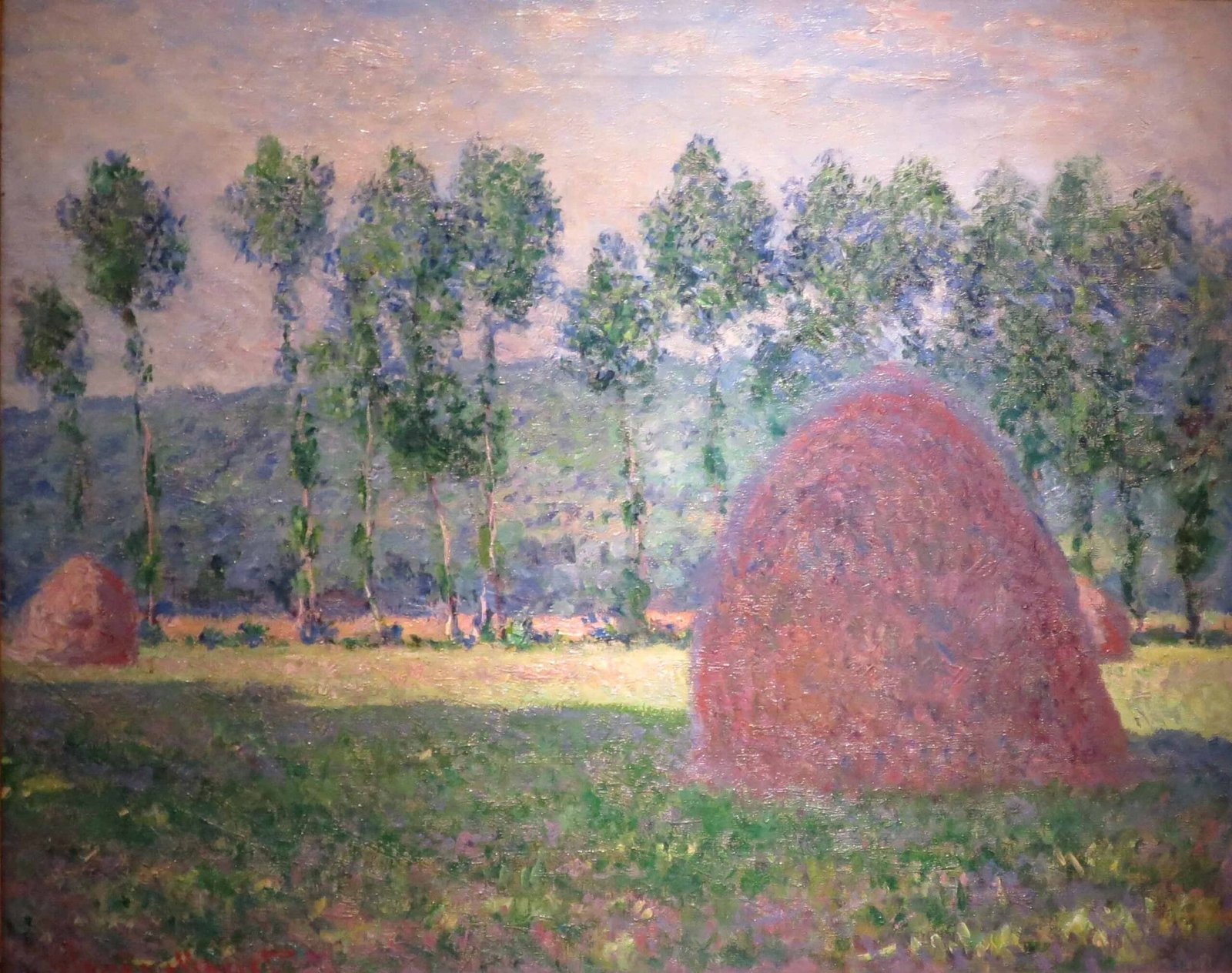
Pushkin Museum, Moscow
One of Monet’s first haystack paintings, starting a theme he would return to obsessively. Here, the forms are soft and warm, lit by a gentle haze.
2. Winter at Giverny (1885)
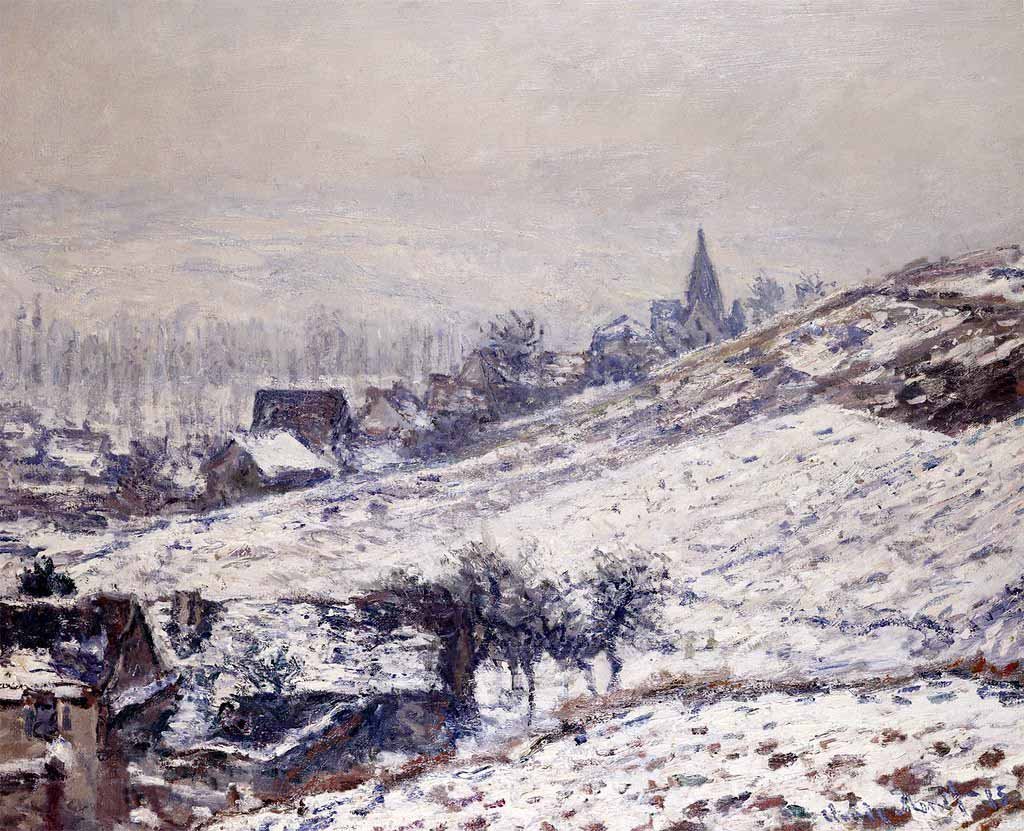
Pola Museum of Art, Hakone
Giverny’s rural quiet turns stark and still in winter. Monet captures the weight of snow and silence.
3. Spring in Giverny, Afternoon Effect (1885)
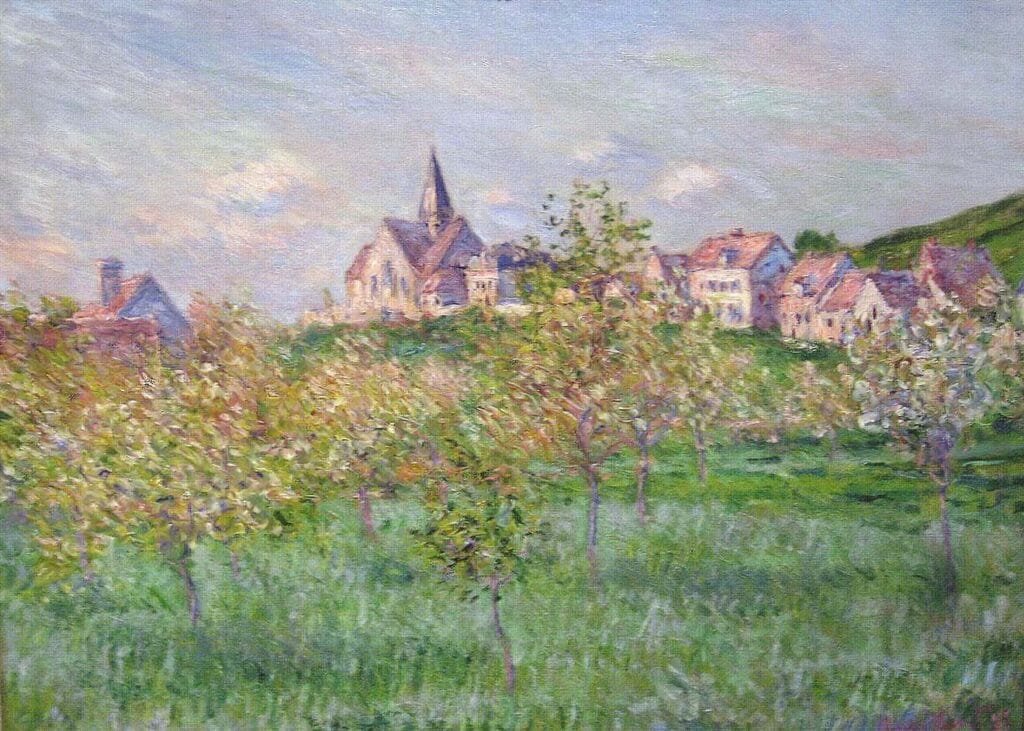
Museum of Fine Arts, St. Petersburg, Florida
Sunlight filters through the soft bloom of spring. The palette is light, almost pastel, catching Giverny’s seasonal shift.
4. Meadow with Haystacks near Giverny (1885)
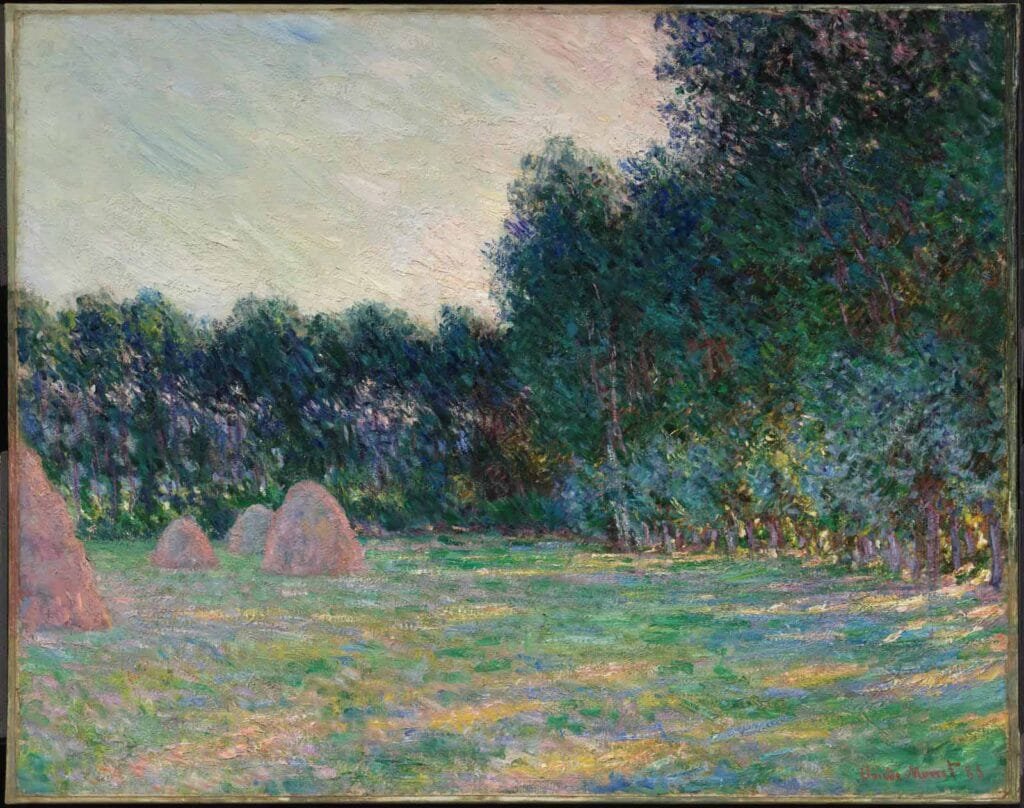
Museum of Fine Arts, Boston
Another take on haystacks, but here they blend into a vast, golden field under open skies.
5. Poppy Field at Giverny (1885)
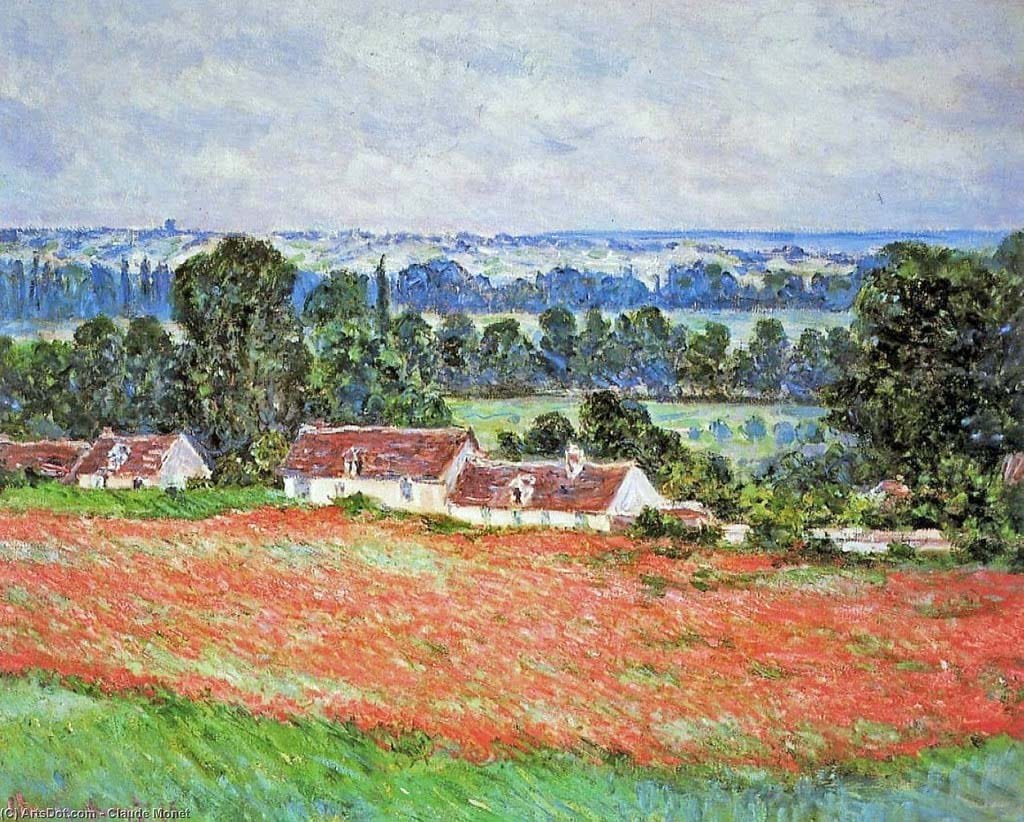
Musée d’Orsay, Paris
Bright poppies break up the green landscape. A quick, joyful brushstroke marks this countryside view.
6. The Seine near Giverny (1885)
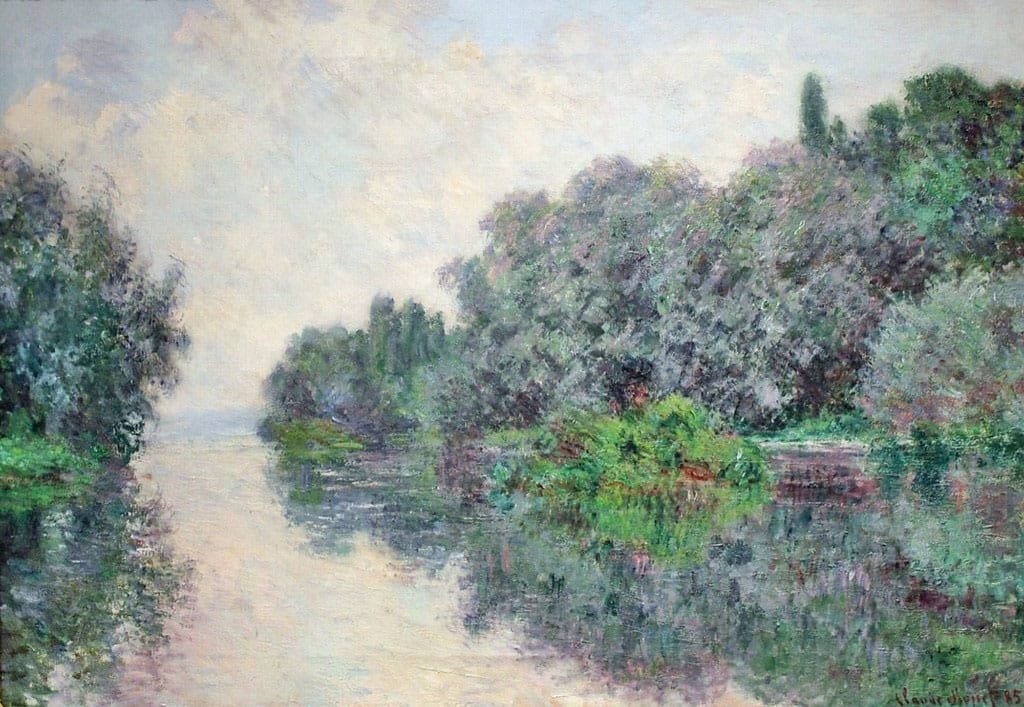
Rhode Island School of Design Museum
The river becomes a study in light and water. Monet renders reflection with a quiet elegance.
7. Arm of the Seine at Giverny (1885)

Musée Marmottan Monet, Paris
A tighter view of the river, with thick brushwork suggesting depth and stillness.
8. Willows, Giverny (1886)
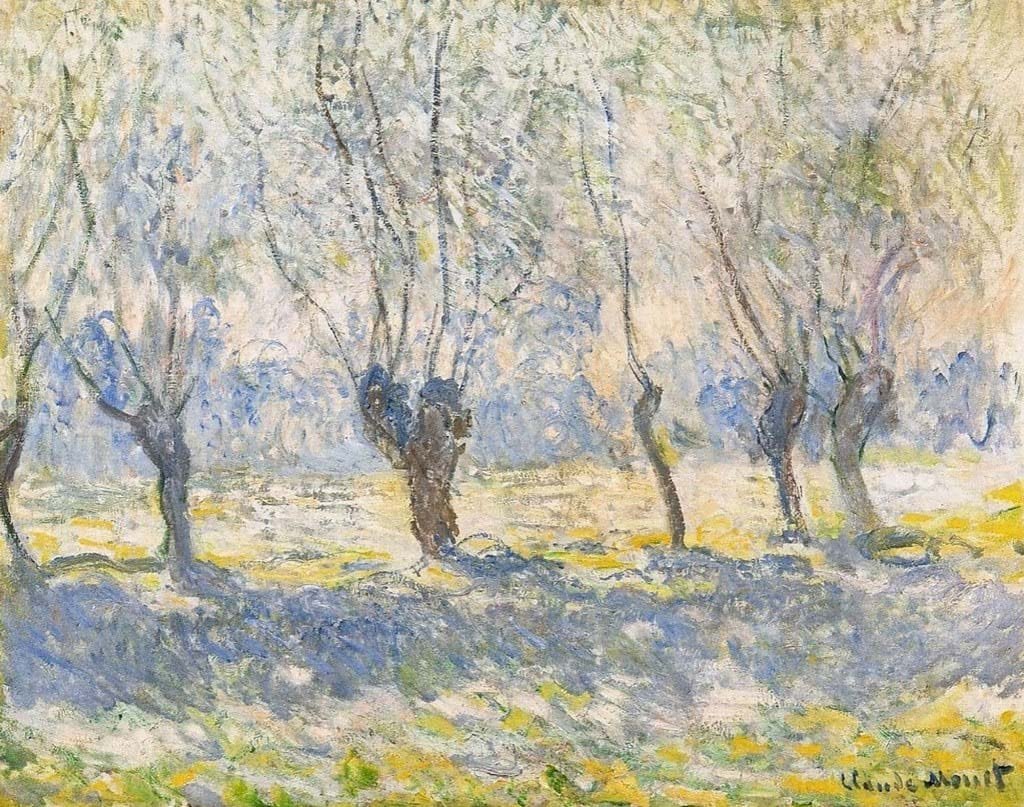
Gothenburg Museum of Art
Willow trees dominate the canvas, their shape dissolving into a rhythmic, textured blur.
9. Springtime at Giverny (1886)
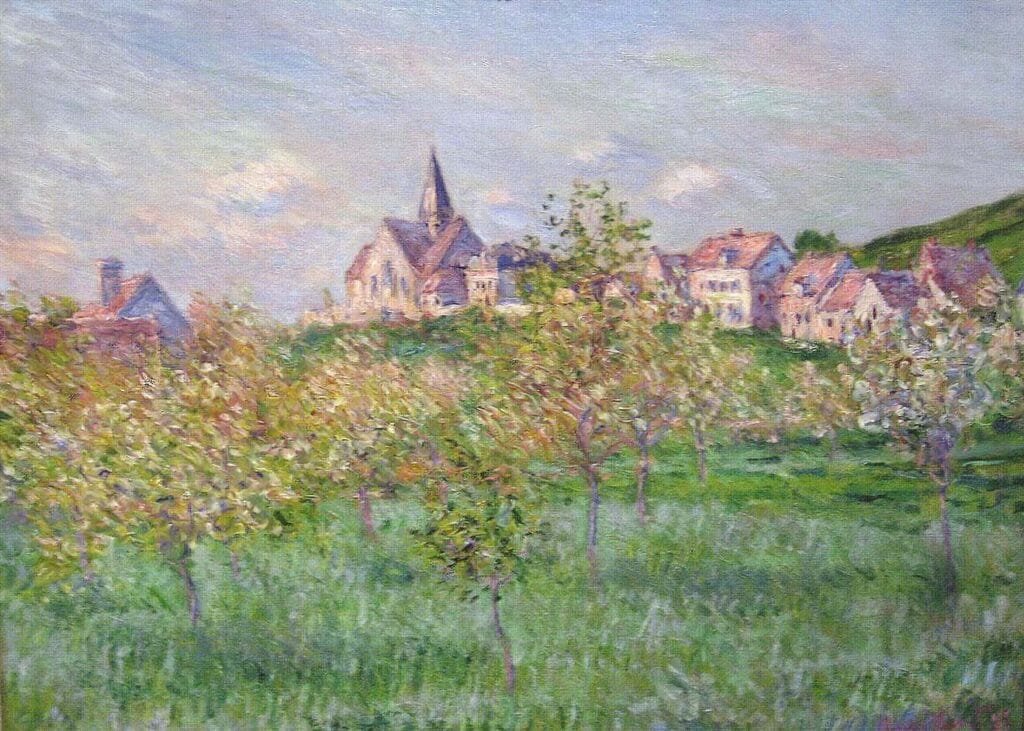
Kreeger Museum, Washington D.C.
This one feels personal—bright, detailed, and full of life, with hints of cultivated beauty.
10. View of Giverny (1886)
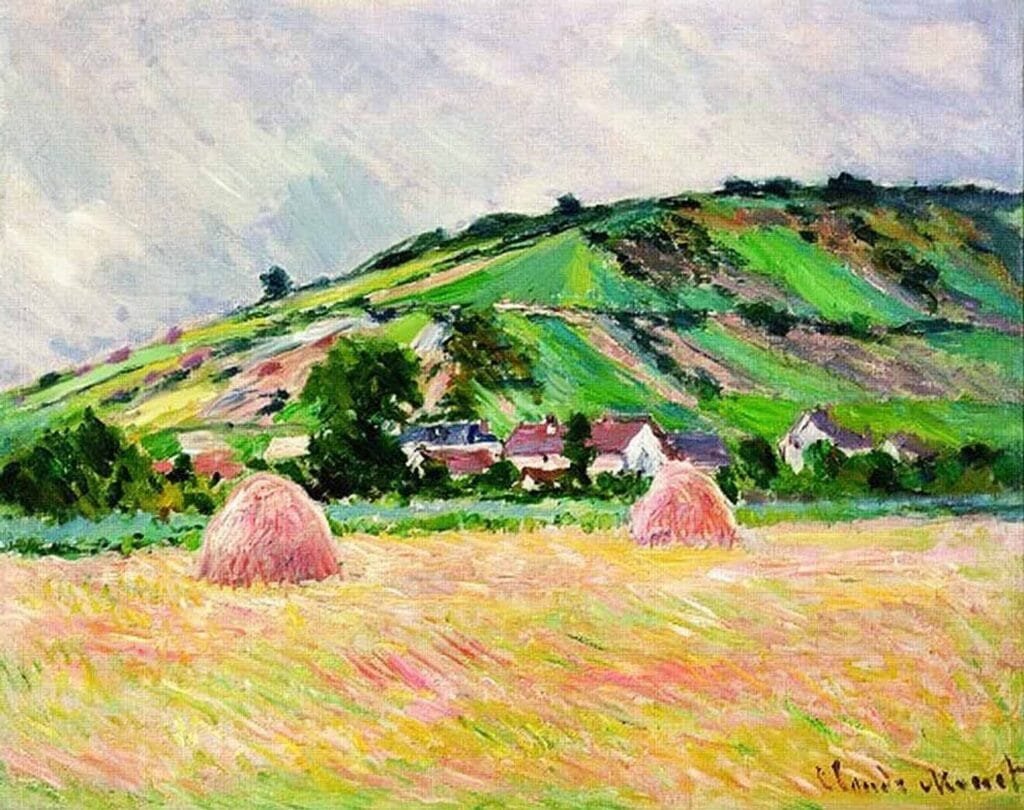
Tehran Museum of Contemporary Art
A distant look across the village, giving a wider context to Monet’s home.
11. Woman with a Parasol (1886)
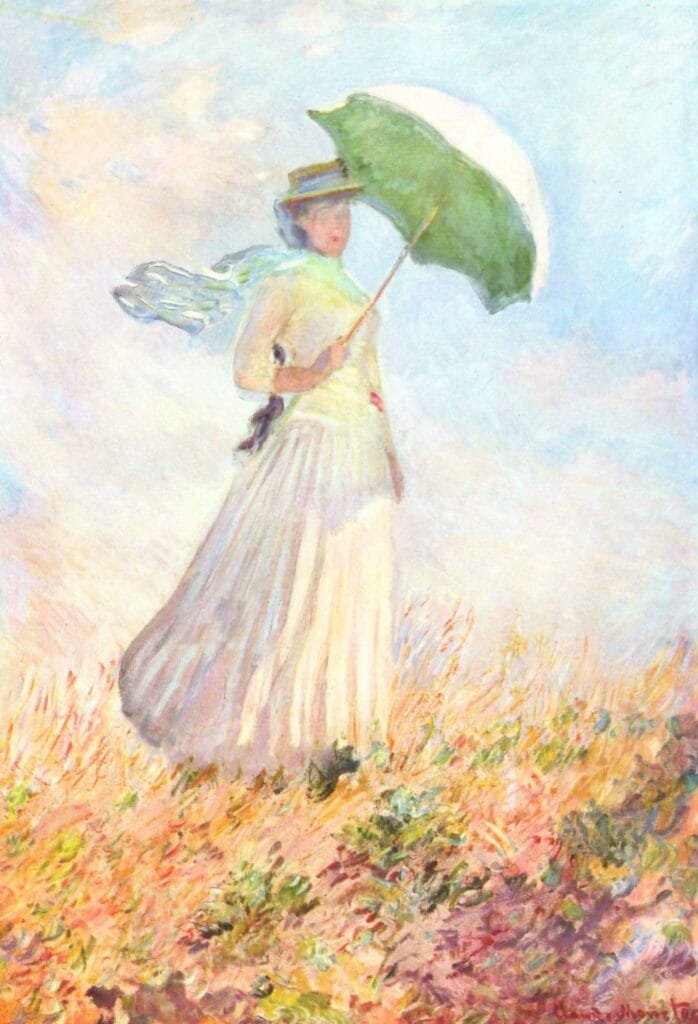
Musée d’Orsay, Paris
Possibly Camille Monet or one of the Hoschedé girls. The breeze and sunlight animate the figure and grass.
12. In the Woods at Giverny: Blanche Hoschedé at her Easel with Suzanne Hoschedé Reading (1887)
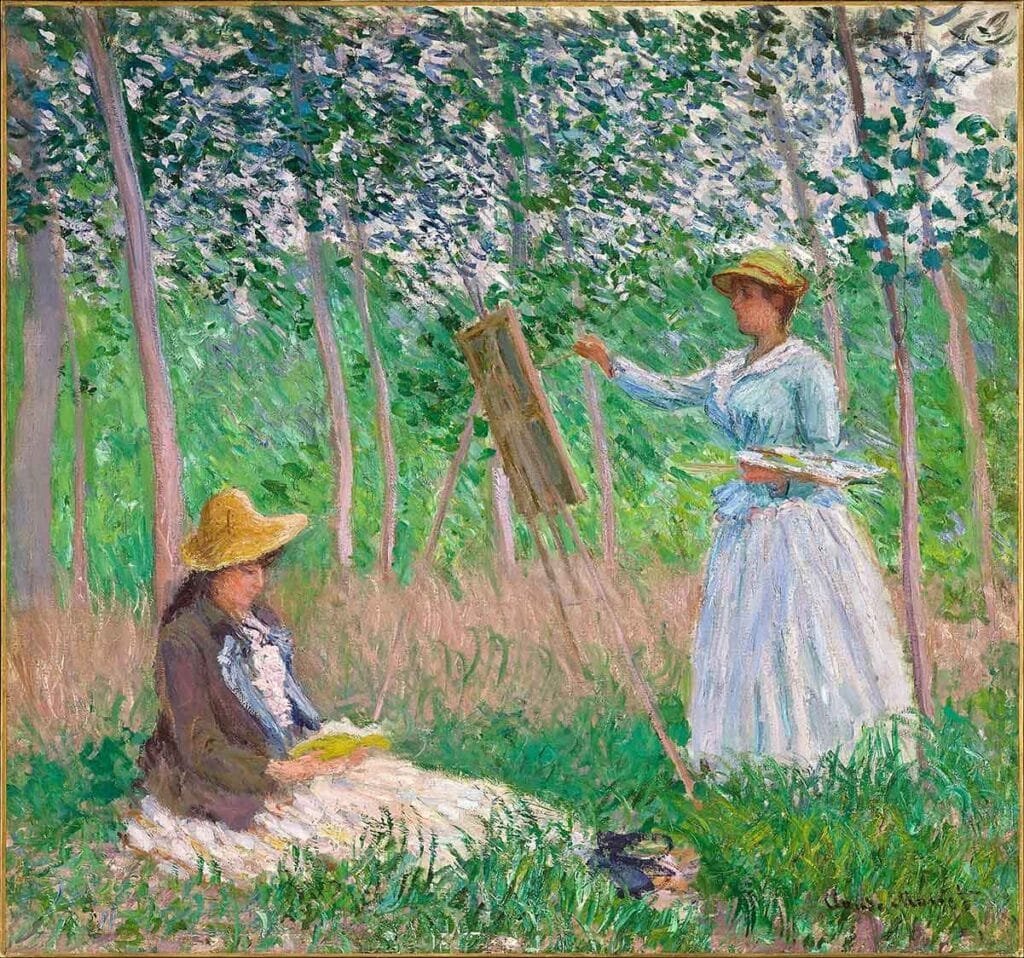
Los Angeles County Museum of Art
A rare domestic scene, blending portraiture with landscape in soft dappled light.
13. The Row Boat (1887)
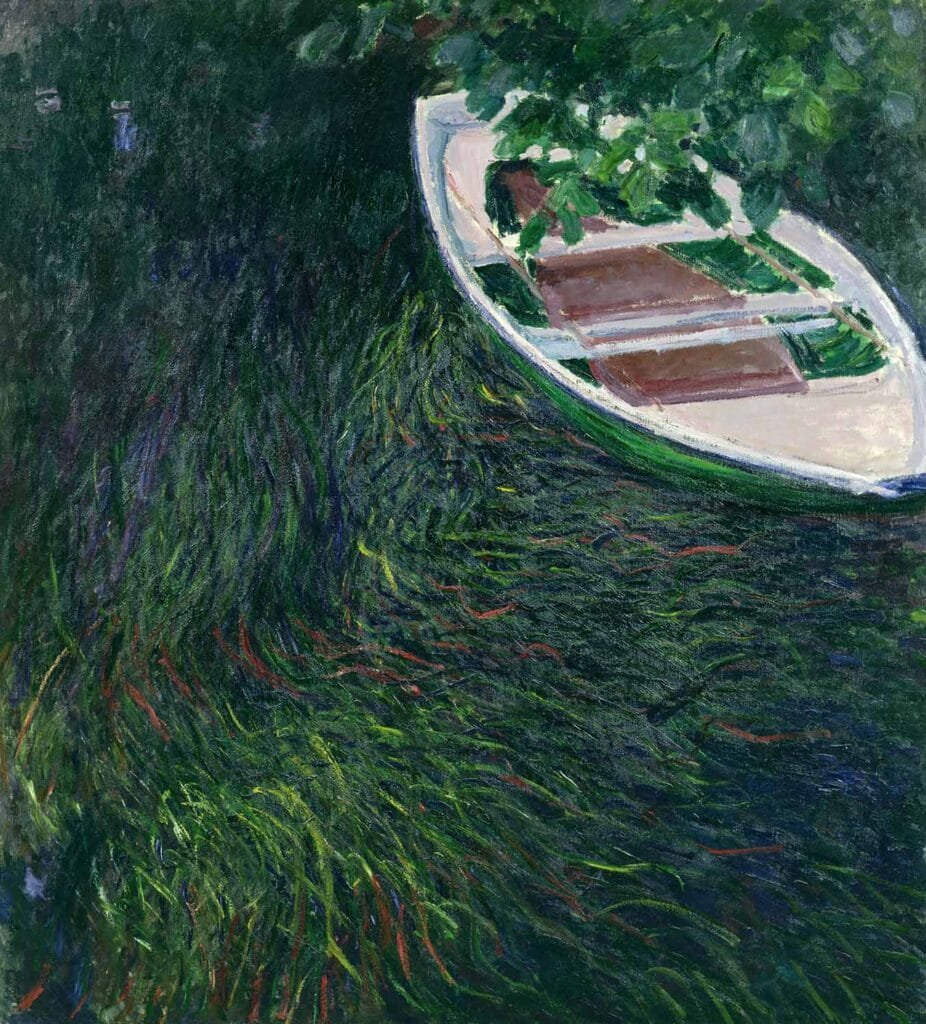
Musée Marmottan Monet, Paris
A simple skiff on the river becomes a poetic study of reflection and balance.
14. Poplars at Giverny, Sunrise (1887)
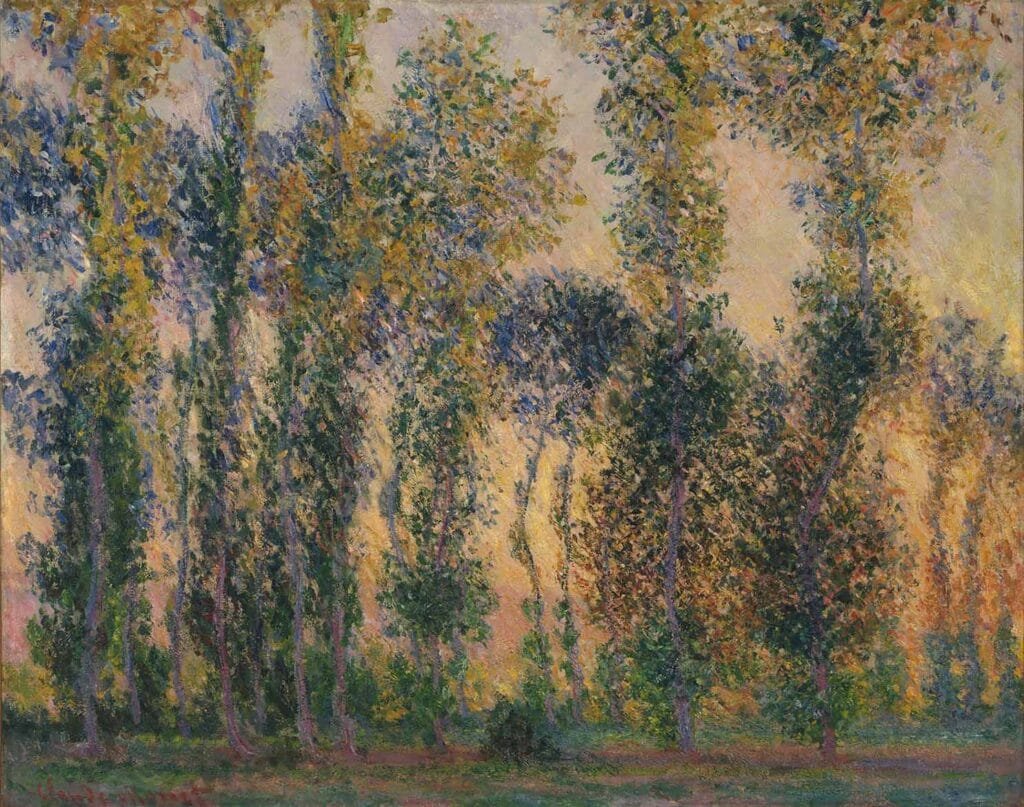
Museum of Modern Art, New York
Monet paints vertical rhythms against a pink-orange sky. The poplars feel almost musical.
15. Morning Fog (1888)

National Gallery of Art, Washington D.C.
A moody, atmospheric painting where the land nearly disappears into mist.
16. Grainstacks at Giverny, Sunset (1889)
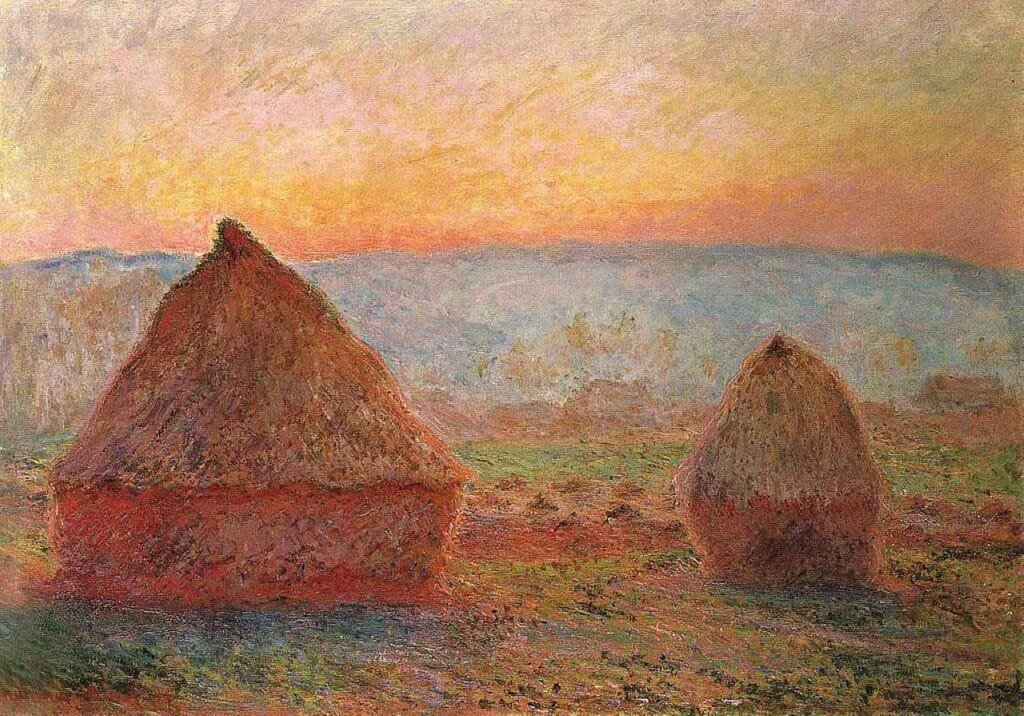
Museum of Modern Art, Saitama
A vivid contrast to the earlier haystacks—warm oranges and deep blues glow at dusk.
17. Meadow at Giverny (1890)
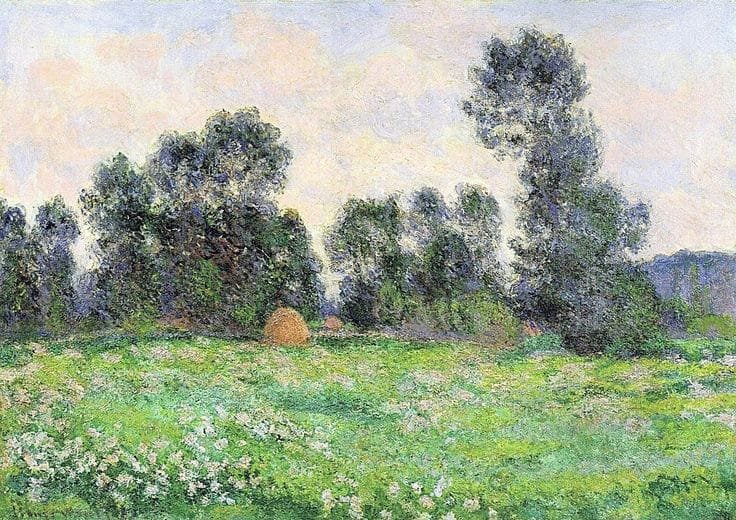
Fukushima Prefectural Museum of Art
Wide-open fields dotted with wildflowers. Loose brushwork gives it an impression of movement.
18. Vernon in the Sun (1894)
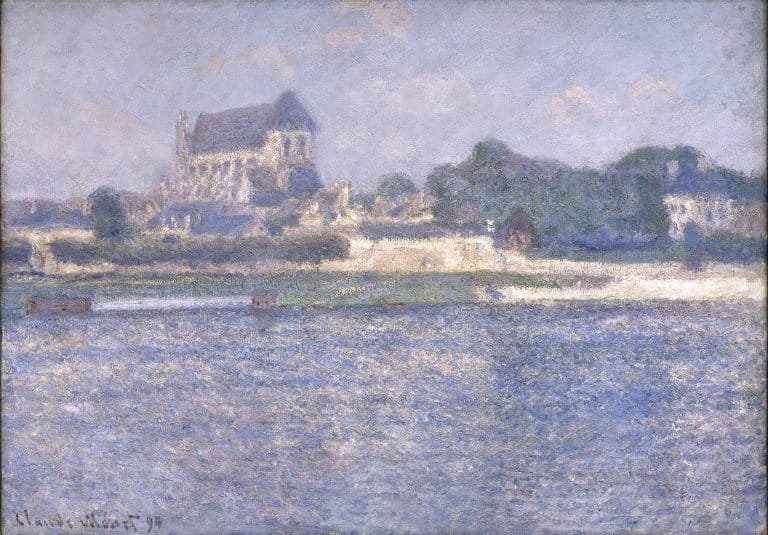
Brooklyn Museum, New York
A nearby village, glowing under the afternoon light. Painted from Giverny, looking outward.
19. The Bridge in Monet’s Garden (1895)

Philadelphia Museum of Art
One of the earliest versions of his now-iconic Japanese bridge, nestled in green.
20. Arm of the Seine near Giverny in the Fog (1897)

North Carolina Museum of Art
A barely-there landscape emerges from thick fog. Pure atmosphere.
21. Apple Trees in Bloom at Giverny (1899)
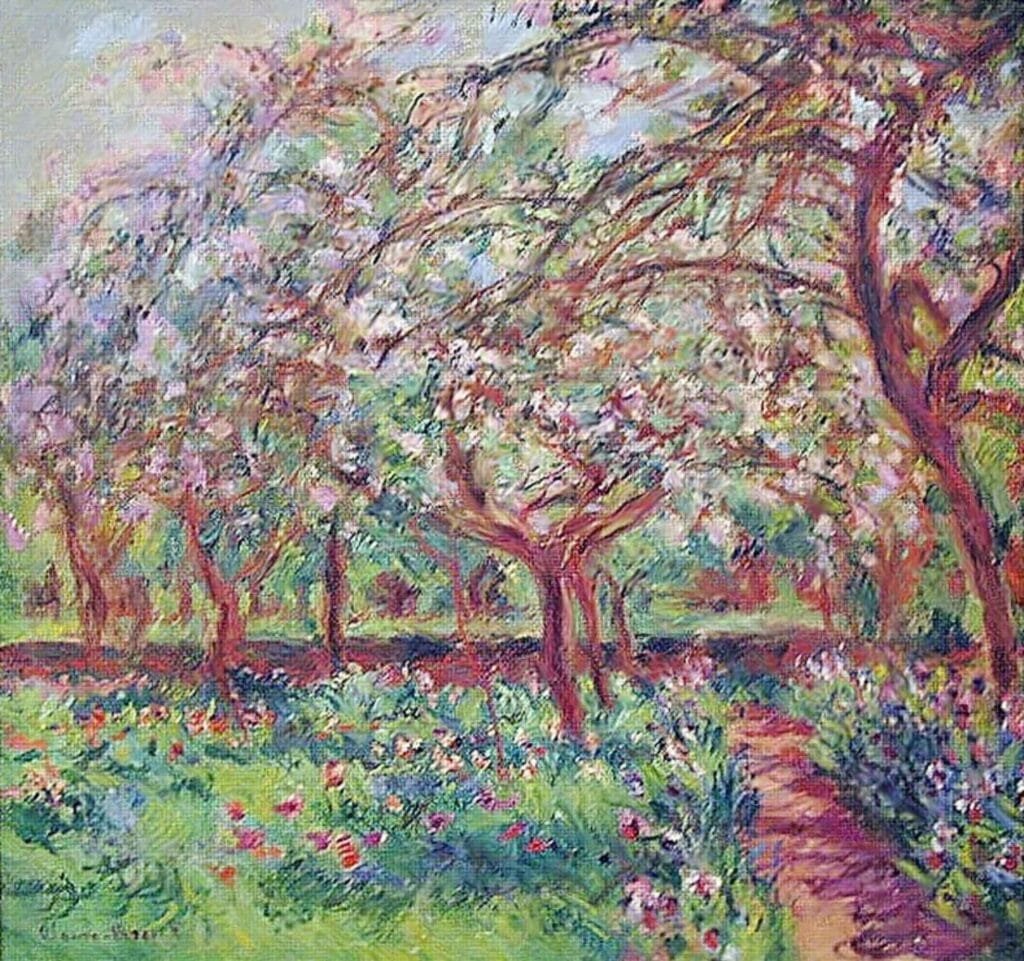
Tel Aviv Museum of Art
Monet captures the dense blossoms in full bloom—an explosion of soft whites and pale pinks.
22. Le Jardin de l’artiste à Giverny (1900)

Musée d’Orsay, Paris
A lush view straight from Monet’s garden, thick with flowers and brilliant color.
23. The Main Path at Giverny (1900)
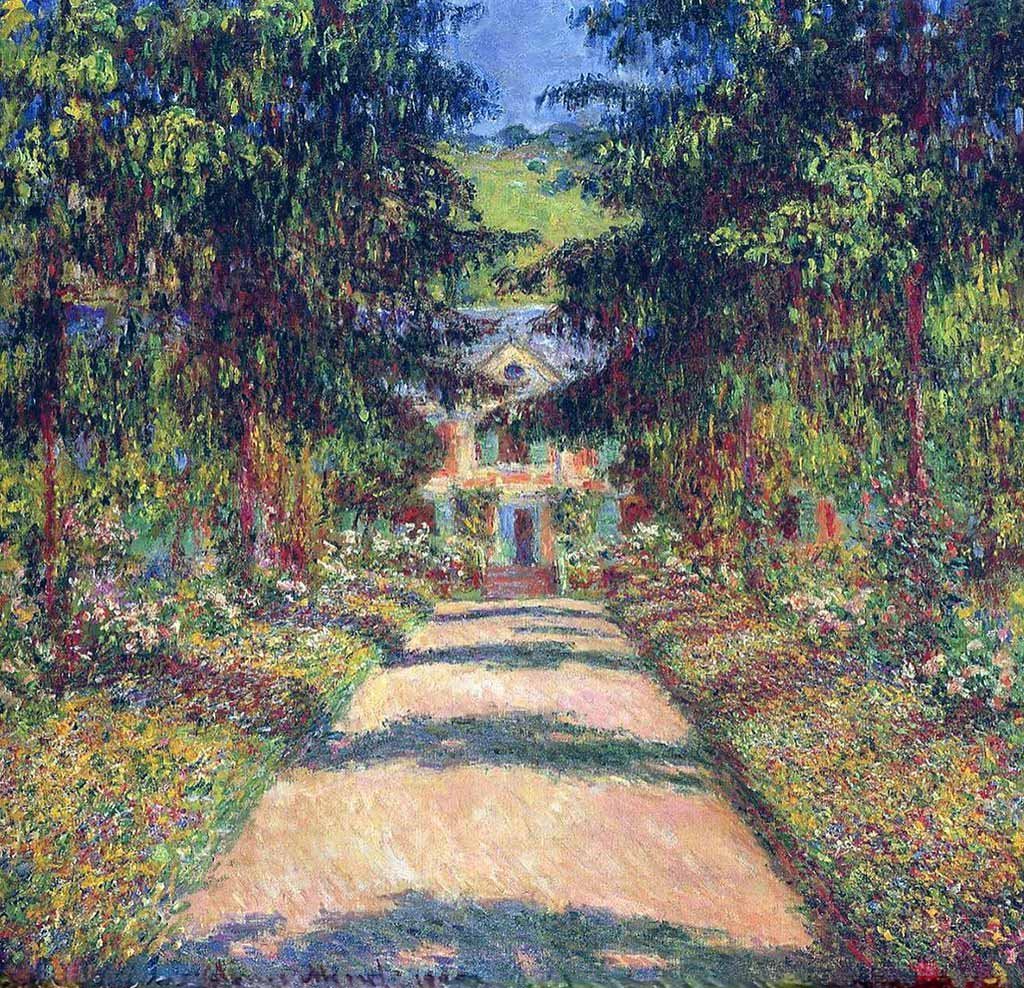
Montreal Museum of Fine Arts
A look down the garden’s central walkway, flowers growing wild on both sides.
24. The Flowered Arches at Giverny (1913)

Phoenix Art Museum
Roses climb over metal arches in soft reds and greens. Full bloom, full frame.
25. Water-Lilies and Agapanthus (1914–1917)
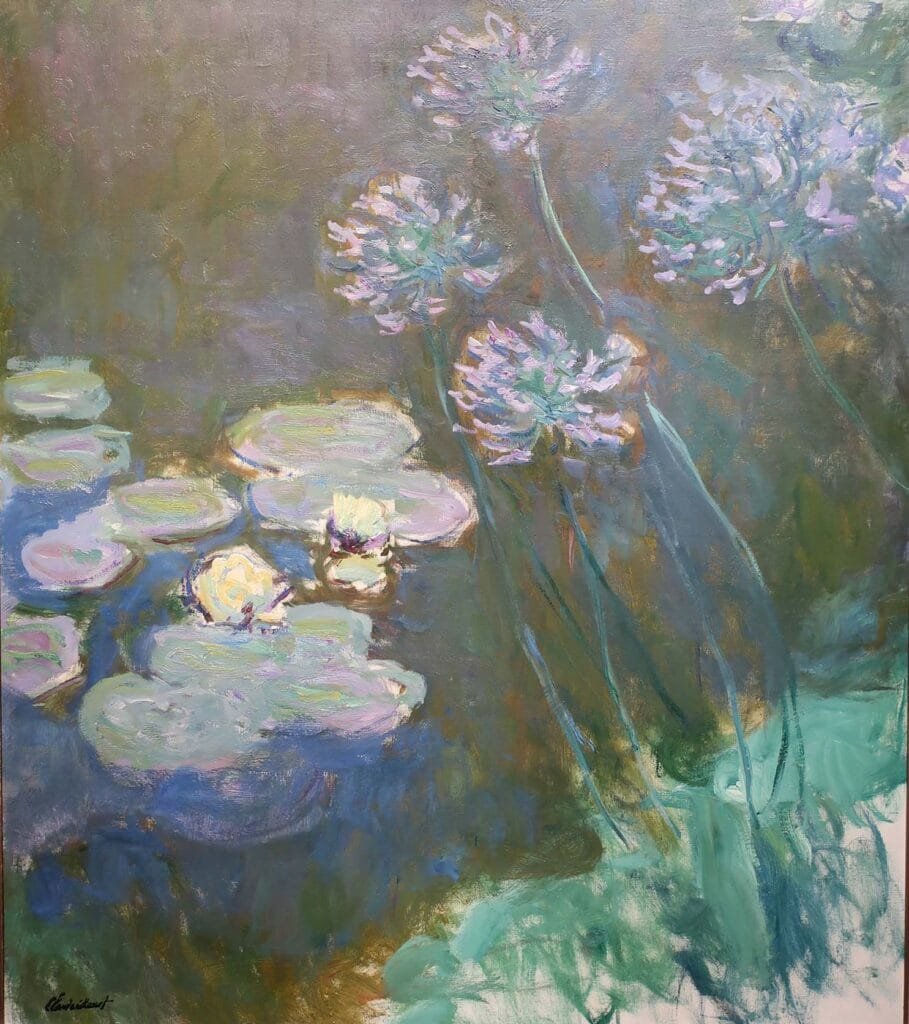
Musée Marmottan Monet, Paris
The pond becomes pure abstraction—floating color and brushstroke.
26. The Path through the Irises (1914–1917)
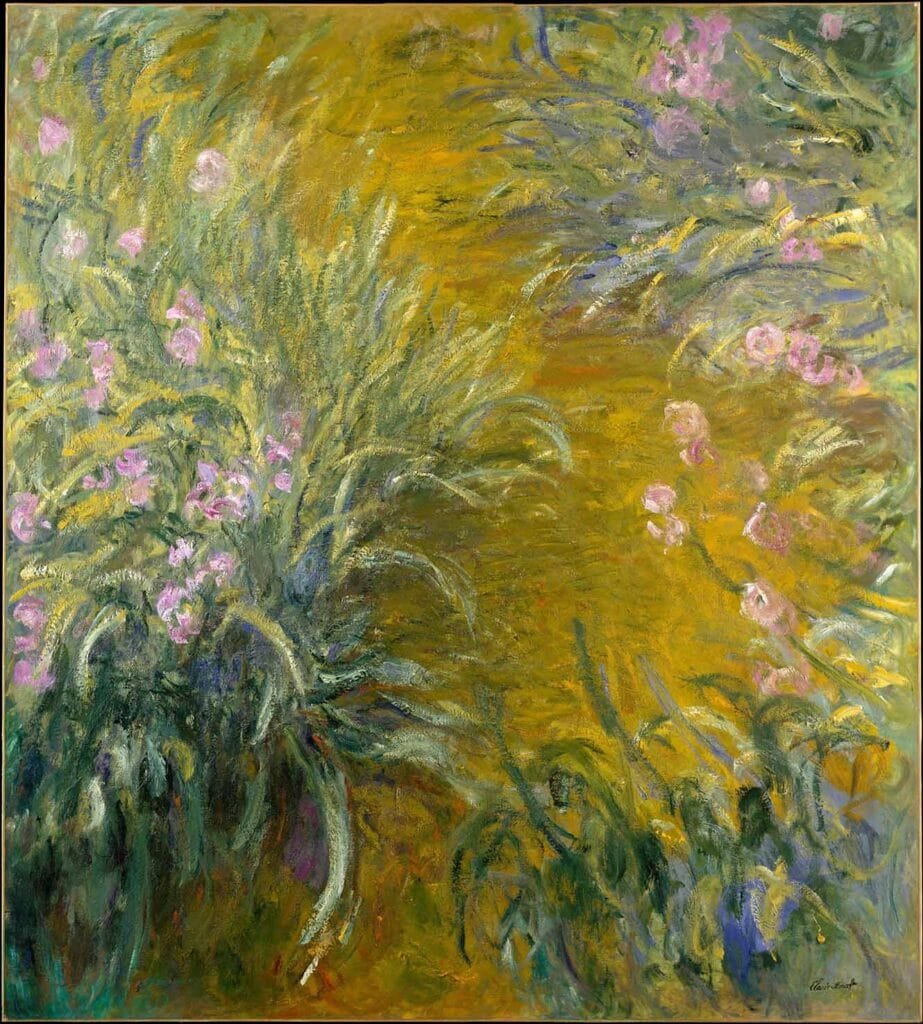
Metropolitan Museum of Art, New York
A winding footpath through tall purple irises. Almost dreamlike in color and form.
27. Weeping Willow (1918–1919)
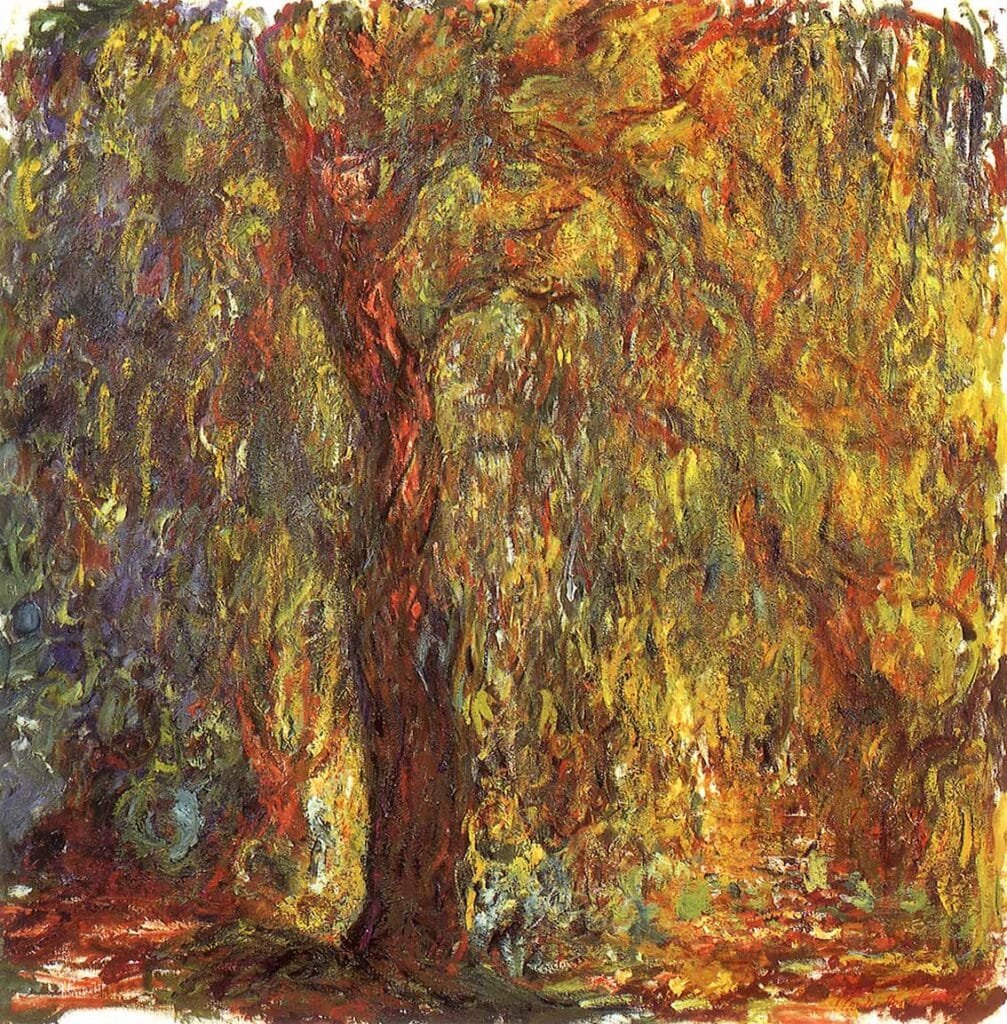
Musée Marmottan Monet, Paris
Painted during World War I, this tree is heavy, dark, and full of emotional weight.
28. The Japanese Bridge (1918–1924)
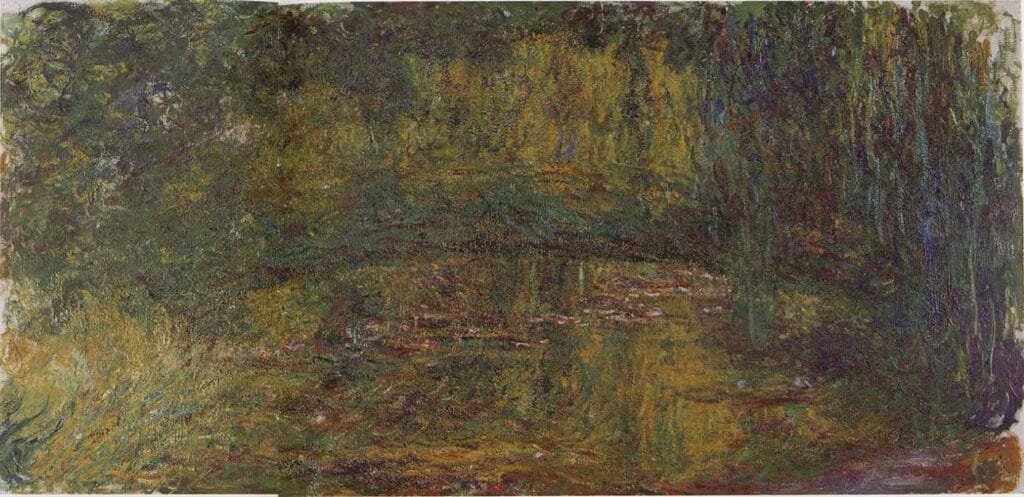
Musée Marmottan Monet, Paris
By now, the bridge is nearly unrecognizable—engulfed in color, light, and emotion.
29. The House Seen from the Rose Garden (1922–1924)

Musée Marmottan Monet, Paris
Monet’s home in Giverny, half-hidden by the garden he built and painted so often.
30. The House amongst the Roses (1925)

Albertina, Vienna
Another look at the house, more serene. Roses spread across the frame like a final note.
Bonus: The Water Lilies – The Clouds (1920–1926)
Musée de l’Orangerie, Paris
Part of the massive Water Lilies panels. No horizon, no edges—just sky, water, and reflection blending into infinity.And that’s a wrap, folks. If you’d like to see some of Monet’s paintings while you’re in Paris, don’t miss our guide on where to see Monet paintings in Paris.